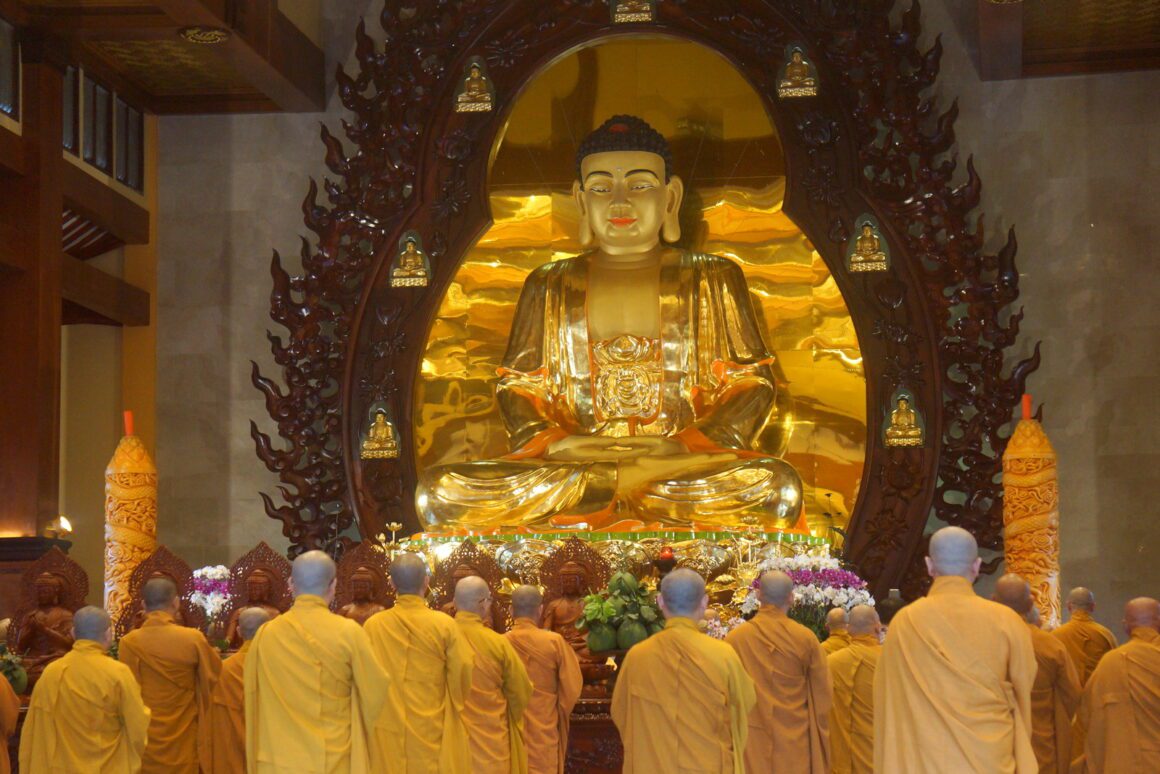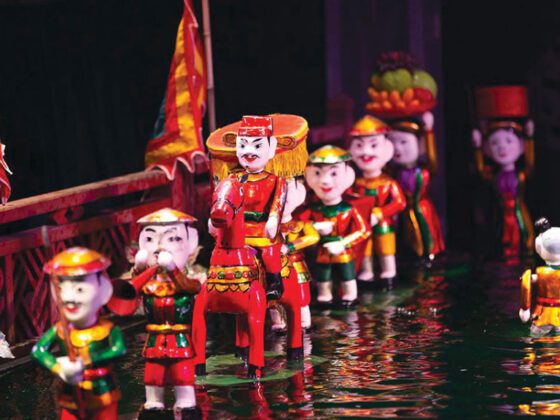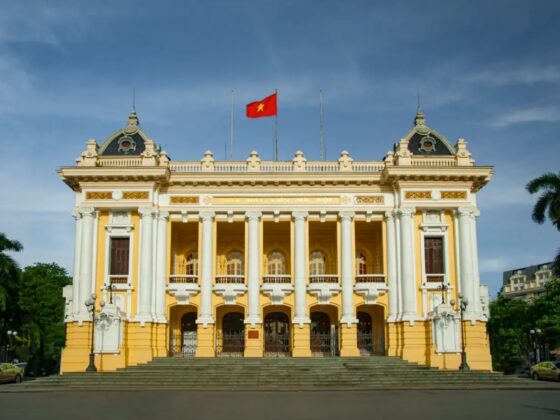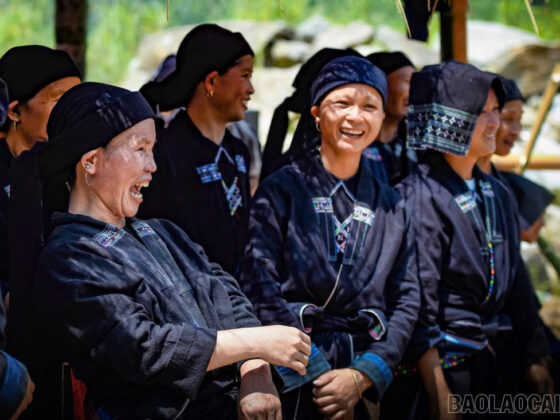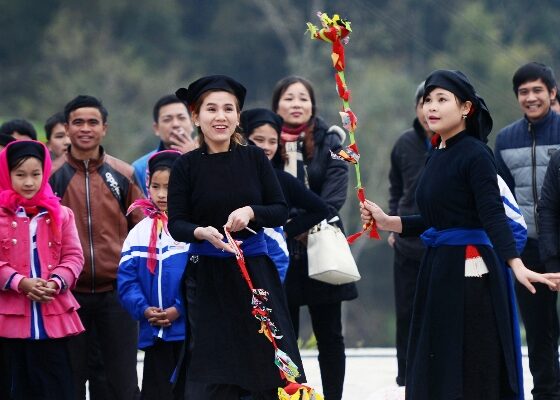Table of Contents Show
✍️ AI is summarizing:
Buddhism in Vietnam has woven itself into the very fabric of the nation’s culture, influencing art, daily life, and community practices for centuries. As one of the major religions in the country, it offers a profound spiritual foundation that shapes the beliefs and values of its people. This rich heritage is evident in the country’s stunning temple architecture, vibrant festivals, and the everyday lives of those who practice its teachings.
Read more interesting posts:
- The Vietnamese Lotus Flower: Why It’s a Symbol of Purity
- The Ao Dai: A Timeless Symbol of Vietnamese Culture & Traditional Dress
- Vietnamese Conical Hat: The Story and Symbolism of the Nón Lá
The history and growth of Buddhism in Vietnam
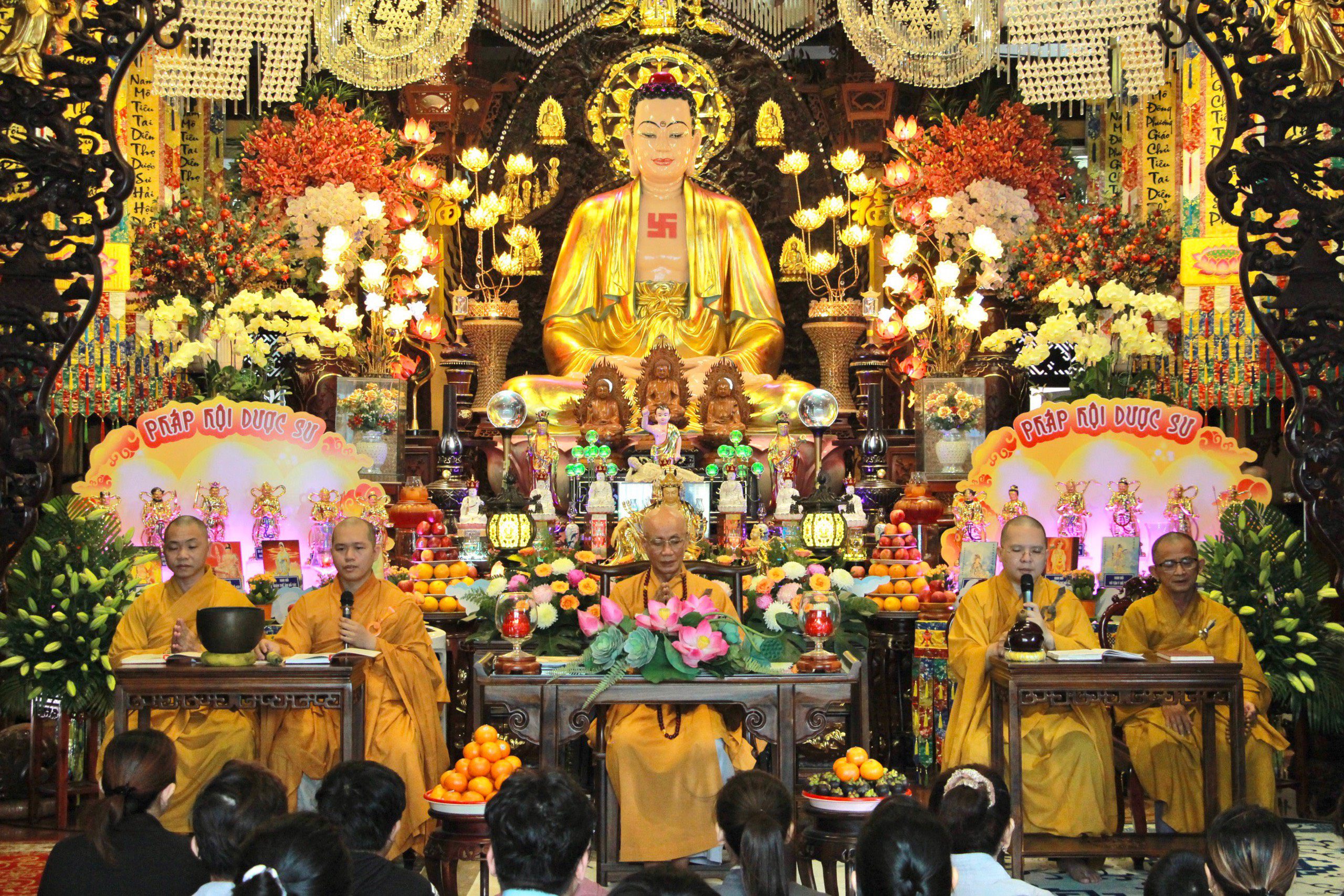
Buddhism first arrived in Vietnam around the 2nd century AD, introduced by Indian traders and monks. Over the centuries, it blended with indigenous beliefs and Confucianism, creating a unique spiritual landscape. As it evolved, Buddhism in Vietnam became an integral part of the national identity, deeply influencing social norms and cultural practices.
Today, there are various schools of Buddhism practiced, with Mahayana Buddhism being the most prominent. Its teachings emphasize compassion, mindfulness, and the pursuit of enlightenment, making it the dominant school of Buddhism in Vietnam and resonating with the people’s values of harmony and respect.
Discovering famous pagodas and the architectural marvels of Buddhism in Vietnam
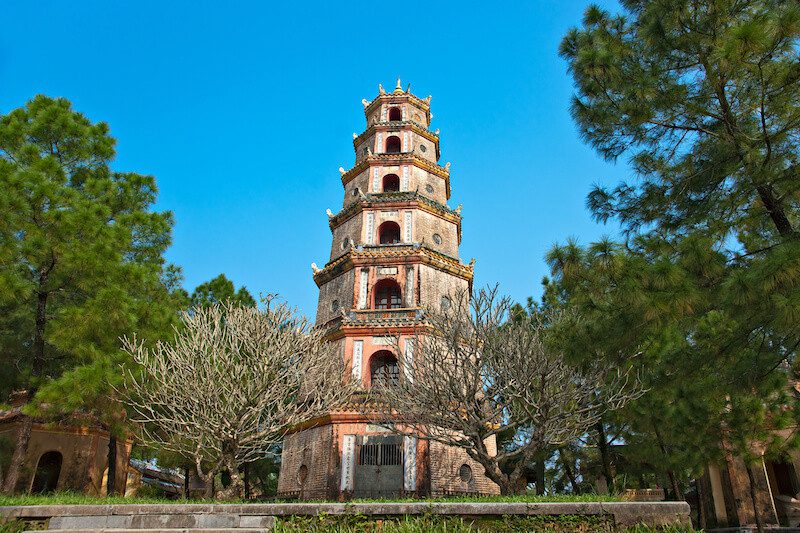
The influence of Buddhism in Vietnam is perhaps most beautifully displayed in the country’s temple architecture. Vietnamese pagodas, with their intricate designs and serene settings, serve as places of worship and reflection. These structures often feature sweeping roofs, ornate carvings, and statues of Buddha, creating an inviting atmosphere.
One of the most notable examples is the One Pillar Pagoda in Hanoi, a stunning architectural marvel symbolizing the lotus flower. This pagoda is not only a place of worship but also a cultural icon. Temples across the country, from the tranquil Linh Ung Pagoda in Da Nang to the majestic Thien Mu Pagoda in Hue, showcase the spiritual and artistic heritage that Buddhism in Vietnam has fostered.
How Buddhism in Vietnam shapes daily life, from home altars to festivals

Buddhism in Vietnam permeates daily life, influencing customs, traditions, and community interactions. Many Vietnamese families maintain a small altar in their homes, where they offer incense and prayers to honour their ancestors and seek blessings. This practice reflects a deep respect for lineage and interconnectedness, which are core cultural values.
During festivals, such as Vesak (Buddha’s Birthday), communities come together to celebrate with elaborate ceremonies, processions, and offerings. These events not only honour the teachings of Buddha but also strengthen community bonds, showcasing the spirit of unity and compassion that defines Buddhism in Vietnam.
Exploring the artistic expression inspired by Buddhism in Vietnam
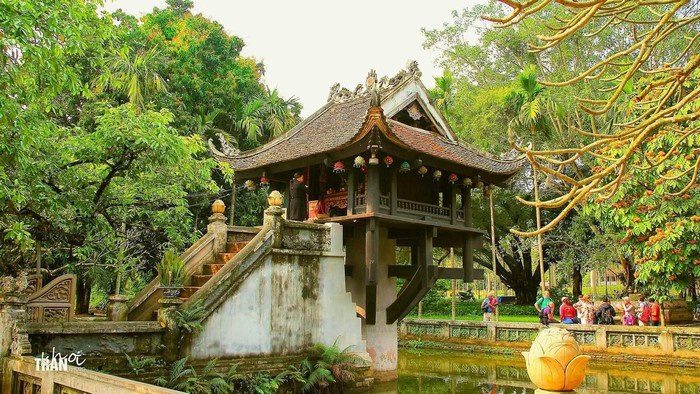
Buddhism in Vietnam has also inspired a wealth of artistic expression. Traditional arts, such as silk painting and sculpture, often depict Buddhist themes, showcasing the beauty of spiritual beliefs. The delicate craftsmanship of these artworks reflects the deep reverence for the teachings of Buddha, capturing moments of meditation, enlightenment, and compassion.
Furthermore, traditional music and dance often incorporate Buddhist themes, enhancing the spiritual atmosphere during ceremonies and celebrations. These art forms serve as a means of storytelling, preserving cultural heritage.
The lasting legacy of Buddhism in Vietnam
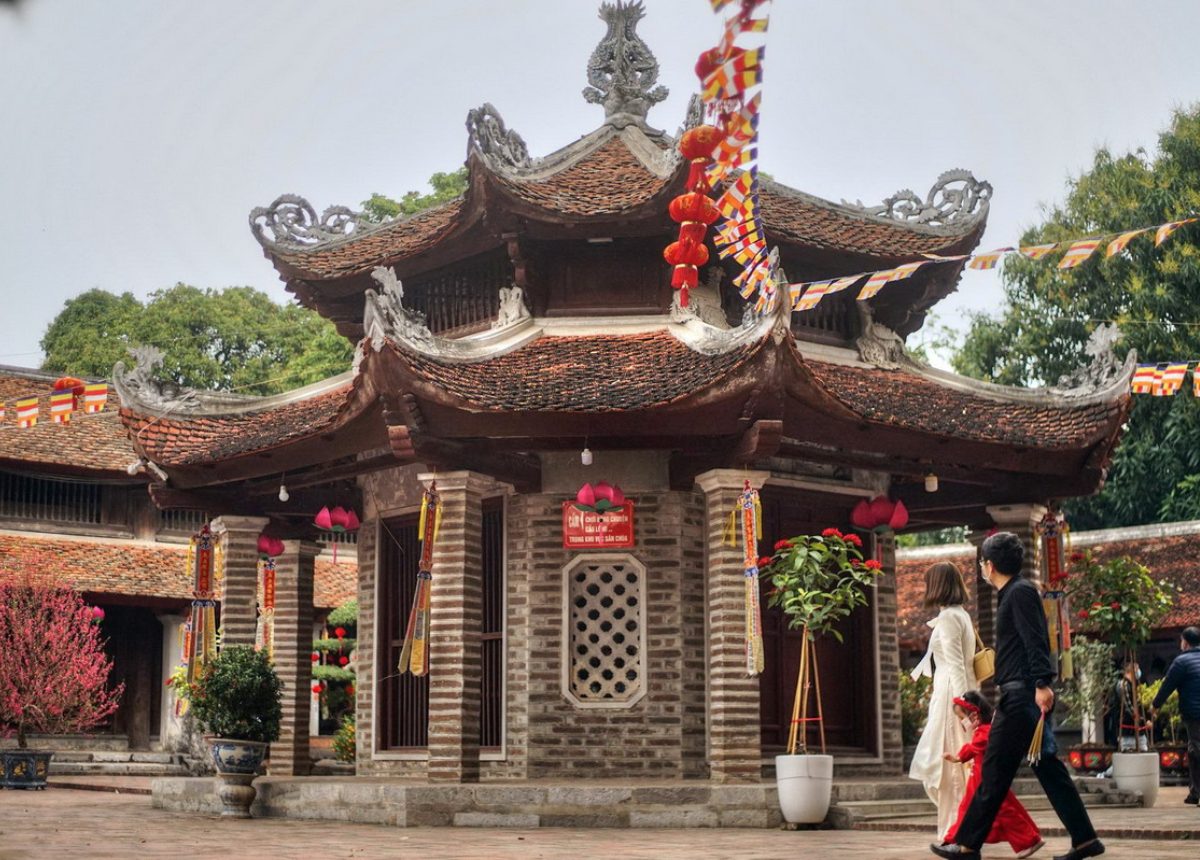
The practice of Buddhism in Vietnam continues to thrive, adapting to modern challenges while retaining its core teachings. As a source of guidance and inspiration, it remains a vital part of the Vietnamese identity, influencing not only individual lives but also the broader community. In a rapidly changing world, one can truly feel the enduring impact of Buddhism in Vietnam on the heart and soul of the nation.
Conclusion
In essence, Buddhism in Vietnam is more than a religion; it’s a cultural and spiritual thread woven into the nation’s identity. From the iconic silhouette of the One Pillar Pagoda to the quiet devotion at a family altar, its influence is both profound and pervasive.
It has uniquely adapted to the Vietnamese spirit, creating a heritage of compassion and mindfulness that continues to shape the country today. For any visitor, understanding this spiritual landscape is key to understanding the heart of Vietnam.
For more insights into Vietnam’s rich culture and to plan your journey, join our community on the ExoTrails Vietnam Facebook group and follow the ExoTrails Fanpage!
FAQs
What is the main type of Buddhism in Vietnam?
The main type is Mahayana Buddhism, which is often blended with traditional Vietnamese folk beliefs and ancestor worship, creating a unique spiritual practice.
What is the role of Buddhism in Vietnamese society?
Buddhism provides a moral and spiritual foundation, influencing everything from family values and community festivals to art, architecture, and daily rituals.
What are the most beautiful pagodas in Vietnam?
Some of the most beautiful include the iconic One Pillar Pagoda in Hanoi, the historic Thien Mu Pagoda in Hue, and the scenic Linh Ung Pagoda in Da Nang.
Why is the One Pillar Pagoda famous?
It is famous for its unique architecture, which resembles a lotus flower blooming from the water, a powerful symbol of purity and enlightenment in Buddhism.
How do Vietnamese people practice Buddhism at home?
Many families maintain a small altar to honor ancestors and Buddha, where they burn incense and make offerings of fruit and flowers daily or on special occasions.
What is Vesak and how is it celebrated in Vietnam?
Vesak is the celebration of Buddha’s birthday, enlightenment, and passing. In Vietnam, it is celebrated with temple visits, colorful lantern processions, and acts of charity.

